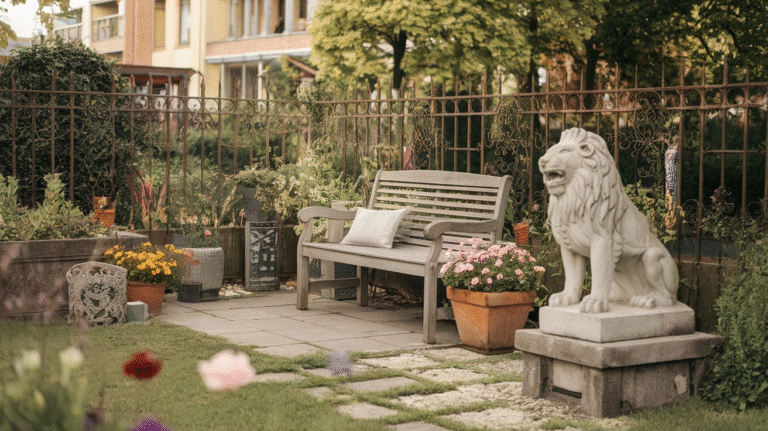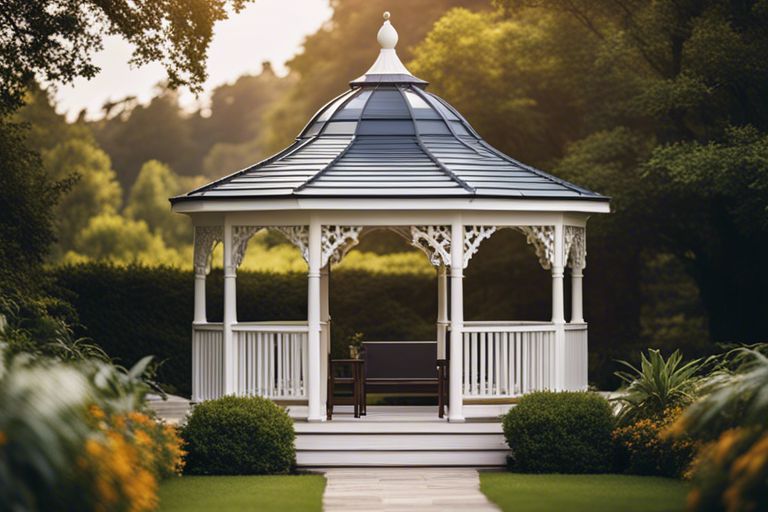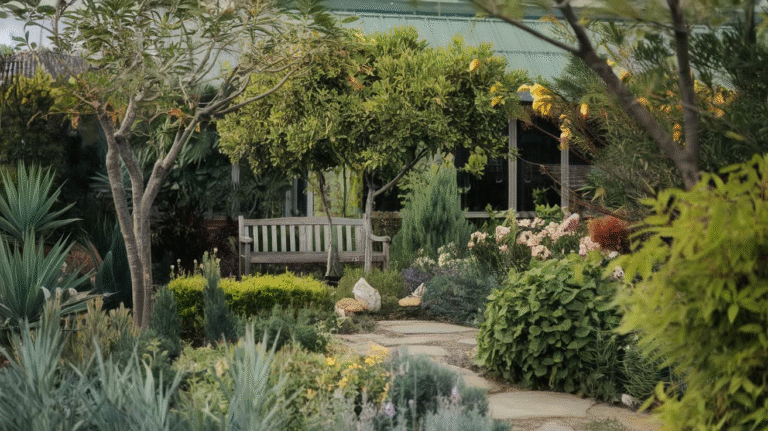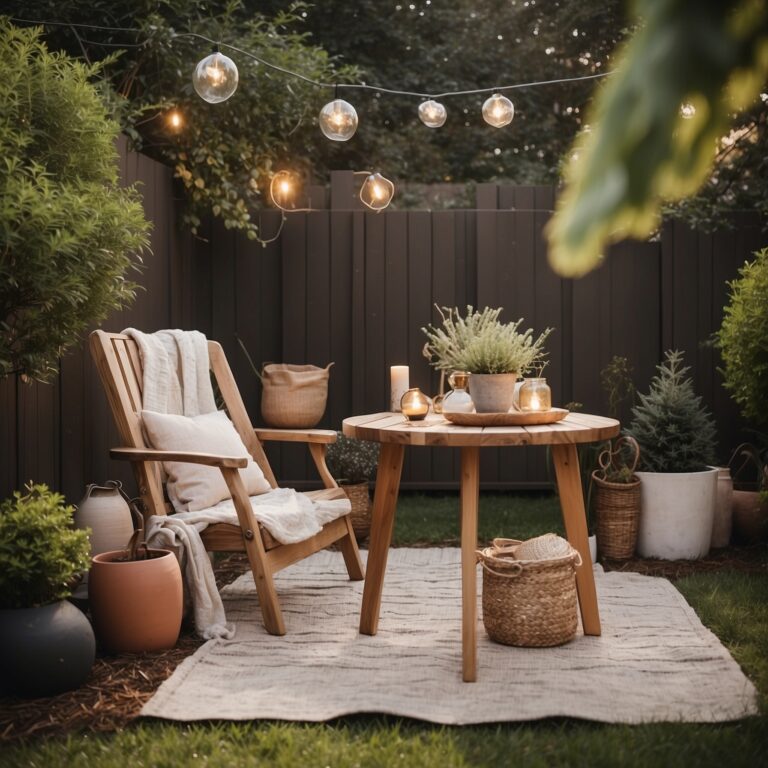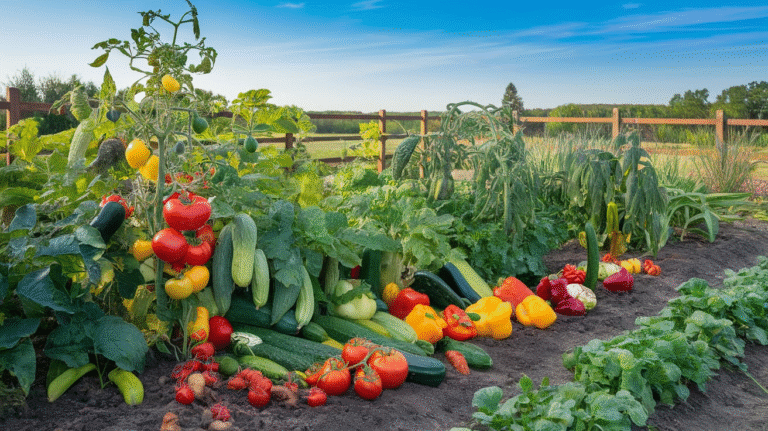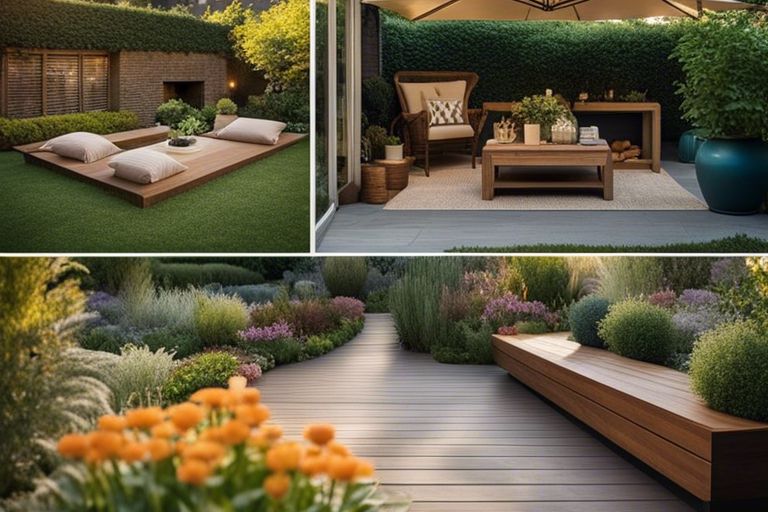23 Small Garden Design Ideas Layout That Actually Work

Small gardens demand smart thinking. Every inch counts, and wasted space is your enemy. But when used right, a small garden can feel bigger, smarter, and even more relaxing than a sprawling backyard.
I’ve worked with urban patios, postage-stamp lawns, narrow terraces, and weirdly shaped courtyards—and what I’ve learned is this: great layout is everything.
These 23 small garden design layout ideas will help you plan your space like a pro—whether you’re working with five square meters or fifty.
1. Divide and Conquer with Zones
Don’t treat your small garden like one open box. Break it up into zones. A seating area here, a planter border there, maybe a water feature tucked in the back. By dividing space, you create the illusion of more space.
In one project, I used a pergola and a low hedge to create a mini outdoor dining nook in an otherwise flat lawn. Suddenly, the garden felt like it had rooms.
Use different floor materials—stone, gravel, decking—to subtly signal each zone.
2. Go Vertical with Planting
When ground space is scarce, walls become your best friend. Vertical gardens, trellises, stacked planters, wall pots, or climbing plants will let you grow up without crowding your layout.
According to a 2024 Houzz report, 64% of homeowners with small gardens implemented vertical solutions in redesigns, citing “maximized plant space” and “better use of walls.”
I once helped a neighbor turn their tiny side yard into a vertical herb wall with over 30 edible plants on one 6×8-foot fence.
3. Use Raised Beds to Define Edges
Raised garden beds help organize your layout. They give structure, act as natural dividers, and even offer seating if you edge them with wide boards.
Keep beds narrow—no more than 2-3 feet wide—so you can reach everything from one side. This avoids the dreaded “soil crush” where you’re stepping on the very thing you want to thrive.
Bonus: raised beds improve drainage and reduce bending.
4. Choose the Right Furniture Scale
Big chairs in a small space feel like sumo wrestlers in a phone booth. Choose low-profile, multi-use, foldable furniture.
Think benches with storage. Bistro tables that tuck away. I once used fold-up wall-mounted seating in a 5-foot-wide patio—pulled down when needed, invisible when not.
Tip: Light-colored or wire-frame furniture feels less visually heavy and keeps the space open.
5. Opt for Diagonal Layouts
This one’s a trick designers use constantly: lay out your hardscaping diagonally. A path or deck set at 45 degrees makes the garden feel wider and longer than it really is.
I used this on a 10×10-foot garden once, tilting everything slightly off-center. Suddenly, it felt twice the size and far more dynamic.
It’s about visual flow, not symmetry.
6. Keep Sightlines Clear
In a small garden, you need to see from one end to the other. Avoid tall, bulky things in the middle. Use transparent materials (like glass or mesh) for railings or fencing when possible.
In a narrow urban space I once redesigned, we placed tall plants only along the edges and left the center open. It created a “corridor of calm” that invited you in.
The eye loves depth. Keep it flowing.
7. Add a Focal Point
Every great garden—tiny or not—needs a focal point. It gives your layout a purpose and a direction.
A fountain, a sculpture, a flowering tree in a pot, or even a brightly painted bench works. Choose something that draws the eye without dominating.
In one tiny Zen garden I designed, a simple stone orb became the quiet center of the whole space.
8. Use Curves to Break the Box
Straight lines make a small space feel rigid. Add curved beds, arched paths, or round planters to soften the layout and make the space feel more natural.
I helped a client add a gentle S-curve to a gravel path that meandered through her 15×20 garden. It not only added charm—it made it feel twice as deep.
Curves suggest motion and depth.
9. Think Multi-Level
Terracing isn’t just for hillsides. Even in flat gardens, raising one section slightly—say, a deck or patio—adds interest and separates areas.
Use small retaining walls, steps, or platforms. It’s a layout trick that makes everything feel more intentional.
In a courtyard I redesigned, just a 12-inch elevation difference between dining and lounging zones completely redefined the space.
10. Mirror the Indoors
Small gardens feel bigger when they act as extensions of your indoor space. Align the layout with your back door, use similar colors, flooring, and furniture styles.
I once matched a client’s indoor tile to her patio stone. The eye saw it as one continuous flow, making her 18×10 garden feel limitless.
It’s not just a layout idea—it’s a psychological hack.
11. Integrate Storage Seamlessly
Storage eats space unless it’s smart. Use built-in benches, vertical sheds, under-deck compartments, and wall-mounted cabinets.
In a balcony garden I created, we built a planter box that doubled as a shoe and tool locker. It replaced the need for a bulky shed.
The average homeowner loses 15-20% of usable outdoor space to inefficient storage, according to UK landscape studies.
12. Use Repetition to Create Rhythm
Repeat shapes, colors, or plant types in your layout to bring cohesion. The eye loves repetition—it organizes space automatically.
In a small rectangular yard, repeating square pavers, square planters, and box-shaped shrubs added unity. It made the layout feel tight and intentional.
Stick to 2-3 repeated elements for balance.
13. Prioritize Proportions
Don’t cram big features into a tight space. Keep everything to scale. If your garden is 12 feet long, don’t build a 10-foot pond. Keep focal points around one-third the width of the space or smaller.
In one 14×8 courtyard, we placed a 3-foot circular patio with a bistro set—perfect scale, and nothing felt squeezed.
Respect the math. Your layout will thank you.
14. Layer Your Planting
Plant in tiers—low, medium, tall—just like arranging a group photo. Put tallest plants at the back, medium in the middle, and shorties up front.
This layout not only maximizes space but makes your garden feel lush and deep.
I once used this method to line a 2-foot-wide border with five layers of plants. It looked like a miniature rainforest.
15. Use Transparent Dividers
Glass, mesh, lattice, or thin slatted wood screens divide space without blocking light or views.
In one 10×10 terrace, we used a metal trellis wall as a divider between lounge and dining zones. It felt open but clearly defined.
Your layout should suggest separation—not enforce it.
16. Go for Symmetry in Tight Spaces
Symmetry works beautifully in small spaces. Two identical planters flanking a doorway, mirrored beds on each side of a path—it brings calm and balance.
A 6×10 garden I helped lay out used a central path with identical flower beds mirrored left and right. The order made the space feel more expansive.
It’s a trick borrowed straight from classical gardens—shrunk to size.
17. Create Hidden Corners
A small nook behind a hedge, screen, or tall planter adds mystery. You don’t need much—just enough space for a bench and a pot.
These hidden corners break the monotony and make your layout feel more layered.
In a 20-foot backyard, we created a tiny “reading corner” behind a bamboo screen. It became the most-used part of the garden.
18. Limit Materials and Colors
Don’t overdo textures and hues. Stick to two or three materials and a simple color palette. Too much variety makes a small garden feel chaotic.
In one compact rooftop, we used only cedar wood, light grey stone, and matte black metal—clean, timeless, and easy to maintain.
Consistency = calm layout.
19. Let the Light Lead You
Use the sun as your designer. Map your garden’s sun and shade over a full day, then layout features accordingly.
Sunny corner? Great for lounging or veggies. Shady wall? Add a water feature or fern garden.
I once moved a client’s seating area just 3 feet to the right—and suddenly it had sunlight all afternoon. The difference was night and day.
20. Use Modular Pieces
Modular furniture and planters allow you to adapt your layout as your needs change.
In one space, we used interlocking wooden tiles, stackable stools, and reconfigurable planter cubes. The layout could flip from party mode to peaceful retreat in minutes.
Flexibility = functionality in a small space.
21. Borrow Views from Beyond
If your neighbor has a stunning tree, a hill, or a skyline—frame it. Cut an opening in a fence or place seating where that borrowed view acts as a natural backdrop.
I designed a garden where a hole in the wall perfectly framed a church steeple in the distance. It became the space’s secret crown jewel.
Your layout doesn’t end at your fence.
22. Blend Hard and Soft Landscaping
Balance hard landscaping (paths, patios, decks) with soft landscaping (grass, soil, plants). Too much hard surface makes the space feel sterile. Too much green feels wild and unstructured.
In one 16×10 garden, we used 60% hardscape and 40% plant beds. That ratio hit the sweet spot: structure + softness.
Use layouts that respect the natural balance of materials.
23. Keep a Clear Path
Always have at least one clear walking path from end to end. Even in the tightest gardens, you should be able to walk freely.
I often use stepping stones or narrow gravel strips to define the main route—then build everything else around that spine.
Movement matters. Your garden layout should invite exploration.
Final Thoughts
A small garden isn’t a limitation—it’s an opportunity for precise, beautiful design. When every foot counts, you’re forced to be smart, selective, and creative. And honestly? That’s where the best layouts are born.
Whether you’re working with a balcony, courtyard, or pocket-sized lawn, these 23 layout strategies give you the blueprint to make it feel expansive, useful, and uniquely yours. Don’t aim for more square footage. Aim for better use of what you already have.
Start with one layout shift—maybe a curved path, a vertical garden wall, or a new focal point. Then build around it. A great garden, no matter the size, starts with a great layout.
And I’ll be honest—there’s nothing more satisfying than turning a “tiny” space into something that leaves people saying, “Wow… how did you fit all this in here?”
I’d love to hear what you try first. Shoot me a message or send a picture. I’m always up for a good garden transformation story.

